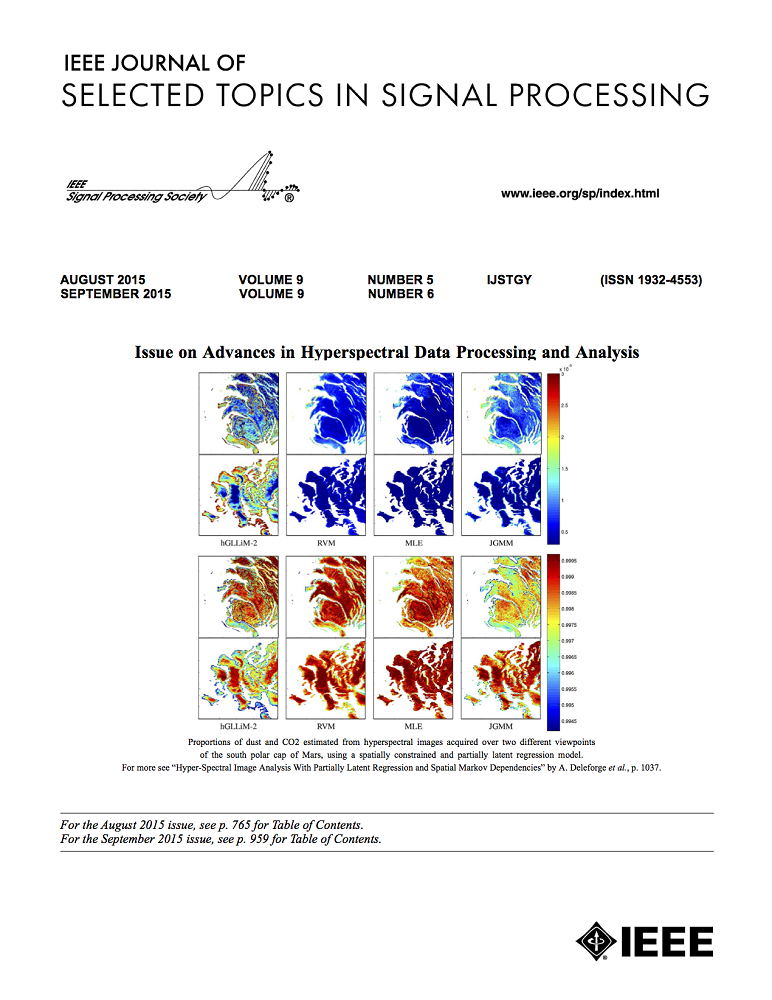Secure Communication Guarantees for Diverse Extended-Reality Applications: A Unified Statistical Security Model
IF 8.7
1区 工程技术
Q1 ENGINEERING, ELECTRICAL & ELECTRONIC
IEEE Journal of Selected Topics in Signal Processing
Pub Date : 2023-08-10
DOI:10.1109/JSTSP.2023.3304117
引用次数: 0
Abstract
Privacy and security assurance over wireless transmissions is one of critical issues for future extended reality (XR) communication systems expected to be supported by the sixth generation of mobile communications networks (6G). In light of the strong anti-eavesdropping capability, physical layer security (PLS) techniques have been recognized as a competitive candidate to provide secure transmissions for XR services. However, existing key performance evaluation metrics, such as the security capacity and the outage security capacity, cannot well capture diverse features of quality-of-security (QoSec) requirements raised by XR services. To overcome the problem, in this article we propose a unified statistical security model that can characterize fine-grained security requirements for various XR applications. Specifically, the eavesdropping process at the eavesdropper is modeled by a queuing system. The arrival process represents the legitimate user's streaming data correctly-captured by the eavesdropper. The departure process represents data that are outdated and moved out of the queue, fitting the essential time-sensitive nature of XR applications. Yet storing the overheard data in the queue is not equivalent to data recovery, the eavesdropper has to accumulate a sufficient of amount correctly-captured data in the queue to successfully decipher some data each time. Under this framework, leveraging the effective bandwidth theory in statistically queuing analyses, we develop the concept of statistical security capacity, which is used to evaluate the legitimate user's throughput with the constrained information level leaked to the eavesdropper. The statistical security model is featured with a parameter called QoSec exponent, quantitatively indicating the fine-grained level of security requirement. Following this model, we formulate the nonconvex statistical-security-capacity maximization problems with the internal and external eavesdroppers, respectively, associated with the cases with and without eavesdropper's CSI known at the legitimate transmitter. Solving the two problems, we derive the corresponding optimal resource schemes over the time-varying fading channels. Simulation results demonstrate our proposal as an effective model for security requirements, and our scheme can significantly improve security-constrained throughput in XR communications compared to the baseline schemes.多种扩展现实应用的安全通信保证:一个统一的统计安全模型
无线传输的隐私和安全保障是未来扩展现实(XR)通信系统的关键问题之一,预计将由第六代移动通信网络(6G)支持。由于具有较强的抗窃听能力,物理层安全(PLS)技术已被认为是为XR业务提供安全传输的有竞争力的候选技术。然而,现有的关键性能评估指标,如安全容量和中断安全容量,不能很好地捕获XR服务提出的安全质量(QoSec)需求的各种特性。为了克服这个问题,在本文中,我们提出了一个统一的统计安全模型,该模型可以描述各种XR应用程序的细粒度安全需求。具体来说,窃听器上的窃听过程由排队系统建模。到达过程表示被窃听者正确捕获的合法用户的流数据。离开流程表示过时的数据并移出队列,符合XR应用程序的基本时间敏感特性。然而,将窃听到的数据存储在队列中并不等同于数据恢复,窃听者必须在队列中积累足够数量的正确捕获的数据,才能每次成功解密一些数据。在此框架下,利用统计排队分析中的有效带宽理论,提出了统计安全容量的概念,用于评估合法用户在泄漏给窃听者的受限信息水平下的吞吐量。统计安全模型具有一个称为QoSec指数的参数,定量地指示了细粒度的安全需求级别。根据该模型,我们分别针对合法发射机已知窃听者CSI和不知道窃听者CSI的情况,提出了具有内部窃听者和外部窃听者的非凸统计安全容量最大化问题。针对这两个问题,我们推导出时变衰落信道上相应的最优资源方案。仿真结果表明,我们的方案是一种有效的安全需求模型,与基准方案相比,我们的方案可以显著提高XR通信中受安全约束的吞吐量。
本文章由计算机程序翻译,如有差异,请以英文原文为准。
求助全文
约1分钟内获得全文
求助全文
来源期刊

IEEE Journal of Selected Topics in Signal Processing
工程技术-工程:电子与电气
CiteScore
19.00
自引率
1.30%
发文量
135
审稿时长
3 months
期刊介绍:
The IEEE Journal of Selected Topics in Signal Processing (JSTSP) focuses on the Field of Interest of the IEEE Signal Processing Society, which encompasses the theory and application of various signal processing techniques. These techniques include filtering, coding, transmitting, estimating, detecting, analyzing, recognizing, synthesizing, recording, and reproducing signals using digital or analog devices. The term "signal" covers a wide range of data types, including audio, video, speech, image, communication, geophysical, sonar, radar, medical, musical, and others.
The journal format allows for in-depth exploration of signal processing topics, enabling the Society to cover both established and emerging areas. This includes interdisciplinary fields such as biomedical engineering and language processing, as well as areas not traditionally associated with engineering.
 求助内容:
求助内容: 应助结果提醒方式:
应助结果提醒方式:


